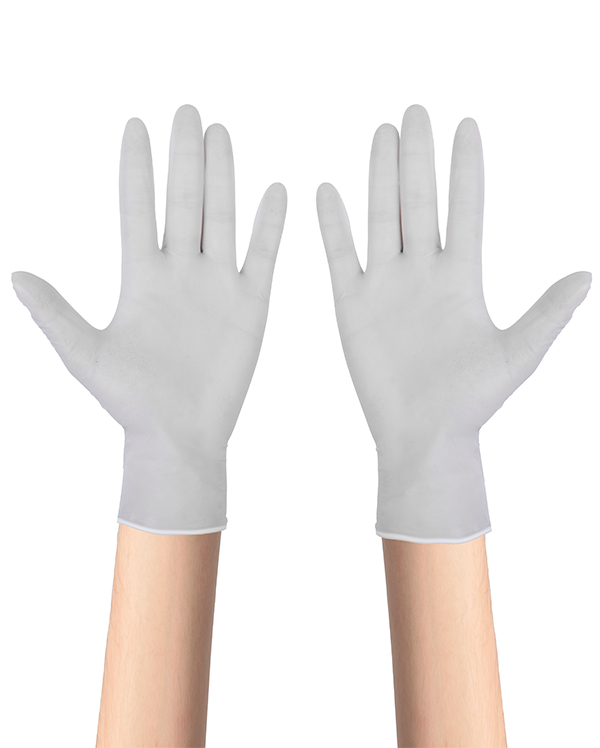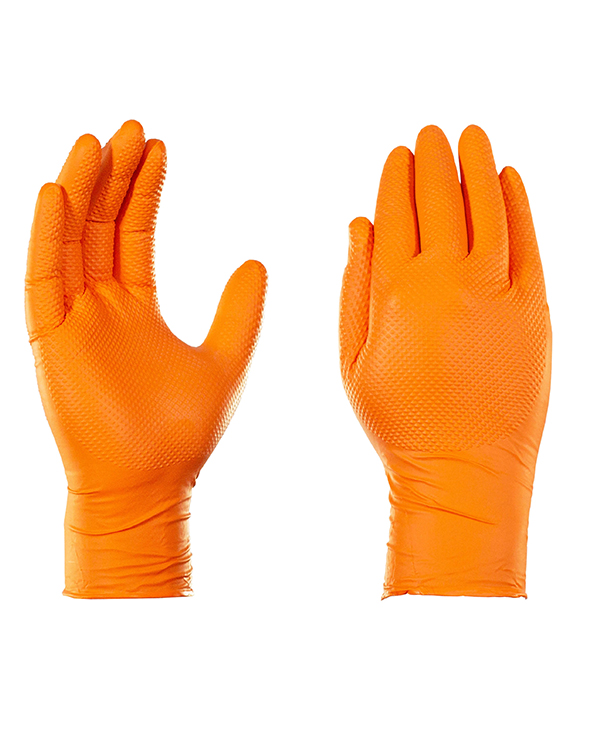Industrial nitrile protective gloves are made of synthetic rubber material, which has excellent chemical resistance and wear resistance and can effectively protect workers' hands from chemicals, solve...
See DetailsWhat are the differences between Medical Nitrile Examination Gloves and other glove materials?
In the medical field, gloves, as important protective tools, are crucial to preventing cross-infection and protecting the safety of medical staff and patients. Among many glove materials, Medical Nitrile Examination Gloves have gradually become the first choice in the medical industry due to their unique properties and advantages. So, what are the differences between Medical Nitrile Examination Gloves compared to other glove materials?
First, from a durability perspective, Medical Nitrile Examination Gloves offer excellent resistance to wear and tear. Compared with latex gloves, they are more durable, less prone to breakage, and can maintain their integrity over long periods of use. This makes it particularly suitable for use in medical environments where frequent replacement of gloves is required, reducing the risk of infection caused by damaged gloves.
Secondly, in terms of comfort, Medical Nitrile Examination Gloves also perform well. Its material is soft and fits the hand, providing good feel and flexibility, allowing medical staff to maintain precision and comfort when performing delicate operations. At the same time, it also has good breathability, which can reduce sweating and stuffiness on the hands and keep them dry and comfortable.
Furthermore, Medical Nitrile Examination Gloves also have excellent chemical resistance. It has good resistance to a variety of chemicals and cleaning agents and is not easily corroded or penetrated. This allows it to maintain integrity and safety when handling a variety of medical waste, chemicals and cleaning agents, effectively preventing harmful substances from harming the hands.
In addition, Medical Nitrile Examination Gloves have a lower risk of allergic reactions than latex gloves. Latex gloves are one of the common allergens, while Nitrile gloves almost never cause allergic reactions, allowing more medical staff and patients to use them safely.
Medical Nitrile Examination Gloves have unique advantages over other glove materials in terms of durability, comfort, chemical resistance and risk of allergic reactions. This makes it a popular choice in the medical industry, providing safer and more reliable protection for medical staff and patients.
First, from a durability perspective, Medical Nitrile Examination Gloves offer excellent resistance to wear and tear. Compared with latex gloves, they are more durable, less prone to breakage, and can maintain their integrity over long periods of use. This makes it particularly suitable for use in medical environments where frequent replacement of gloves is required, reducing the risk of infection caused by damaged gloves.
Secondly, in terms of comfort, Medical Nitrile Examination Gloves also perform well. Its material is soft and fits the hand, providing good feel and flexibility, allowing medical staff to maintain precision and comfort when performing delicate operations. At the same time, it also has good breathability, which can reduce sweating and stuffiness on the hands and keep them dry and comfortable.
Furthermore, Medical Nitrile Examination Gloves also have excellent chemical resistance. It has good resistance to a variety of chemicals and cleaning agents and is not easily corroded or penetrated. This allows it to maintain integrity and safety when handling a variety of medical waste, chemicals and cleaning agents, effectively preventing harmful substances from harming the hands.
In addition, Medical Nitrile Examination Gloves have a lower risk of allergic reactions than latex gloves. Latex gloves are one of the common allergens, while Nitrile gloves almost never cause allergic reactions, allowing more medical staff and patients to use them safely.
Medical Nitrile Examination Gloves have unique advantages over other glove materials in terms of durability, comfort, chemical resistance and risk of allergic reactions. This makes it a popular choice in the medical industry, providing safer and more reliable protection for medical staff and patients.
Get in Touch
-
 Email: [email protected]
Email: [email protected] -
 Fax: +86-0510-86302212
Fax: +86-0510-86302212
-
 Telephone: +86-0510-86301263
Telephone: +86-0510-86301263
-
 Phone: +86-195 5190 0352
Phone: +86-195 5190 0352
Experienced staff and experts are always at your service to provide you with professional guidance for satisfactory solutions to technical problems.
-

+86-195 5190 0352
-

-

-


 English
English  中文简体
中文简体











